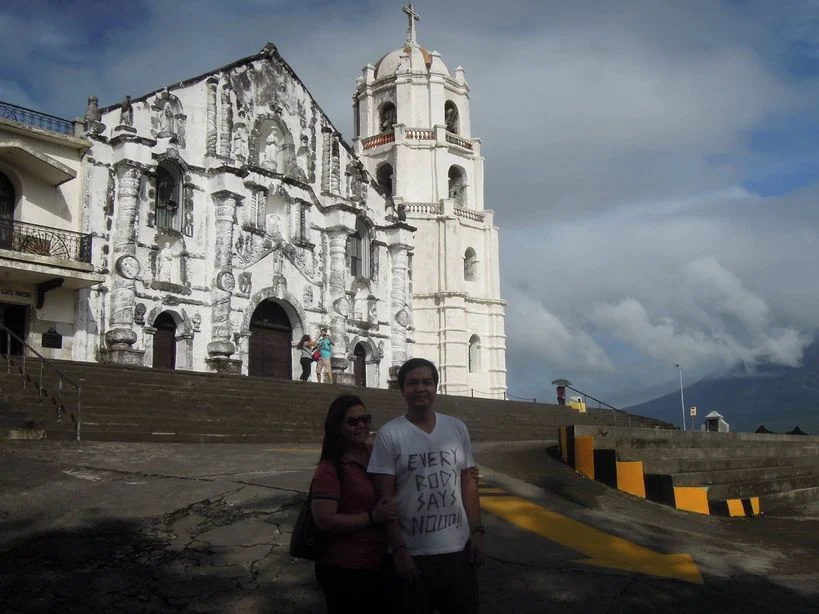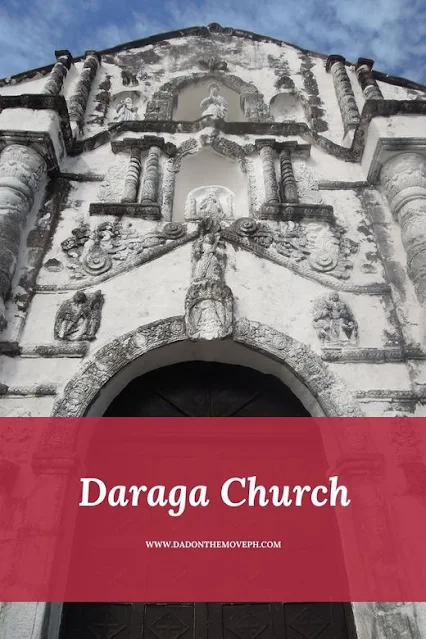Discover the rich history of the beautiful Daraga Church in Albay.
Daraga Church, with the Mayon Volcano in the background, is a composition that is postcard-perfect. It’s a vista that is sure to take your breath away.
 |
| The facade of Daraga Church |
Daraga Church: Albay’s Historical Gem
Visiting Daraga Church
Daraga Church is also known as the Church of the Nuestra Señora de la Porteria
also called Our Lady of the Gate but more commonly known as Daraga
Church.
We visited this beautiful church when we went to Bicol in 2014. After
breakfast at the homegrown Bigg’s Diner restaurant, we made a steep climb on a
road until we reached the top of a hill where the church was perched.
History of Daraga Church
Daraga Church was constructed in the late 1700s by Franciscan missionaries in
the old barrio of Daraga, then part of Cagsawa.
 |
| The door and arch of Daraga Church |
Daraga became a municipality when the old town of Cagsawa was destroyed by the devastating eruption of Mayon Volcano during the early 1800s. The survivors of the eruption sought refuge in Daraga which has since then grown to be a first-class municipality that is a center of trade and business.
Daraga Church’s architectural style is touted as distinctive among local
churches because it features a blend of three design influences: Renaissance,
Gothic and Mexican baroque.
Its façade, carved out of volcanic stone, features four spiral columns with medallions bearing images of the four Evangelists, Sts. Matthew, Mark, Luke,
and John.
The elaborately-engraved façade also contains images of Our Lady of the
Gate, Franciscan saints, and the coat of arms of the Franciscan order, among
others.
Meanwhile, the multi-tiered belfry has an octagonal base, and sides that feature the images of the 12 Apostles. As can be expected, the volcanic stone is the primary material used to build the Daraga Church.
 |
| Inside Daraga Church |
Daraga Church was used as headquarters by Japanese soldiers during World War
II in 1945. Severely damaged because of the war, it was restored from 1971
to 1972.
The Church is a National Cultural Treasure as declared by the National
Museum. A historical marker officially confirms the Church’s status as a
historical and cultural landmark.
Daraga Church was named in honor of Nuestra Señora de la Porteria or Our
Lady of the Gate, the title given to the Virgin Mary because of her
intervention which allowed mankind to enter the gates of the Kingdom of
Heaven.
Similar stories
If you would like to read similar stories about churches and their history,
you may refer to the following articles:
- Heritage Series: the all-steel San Sebastian Church
- Heritage Series: Poblacion, the Old District of Makati
- Heritage Series: Nuestra Señora de Gracia Church (Guadalupe Church)
- Heritage Series: Our Lady of Manaoag Church, Pangasinan
- Heritage Series: Churches in Nueva Ecija
- Heritage Series: Visita Iglesia in Arayat, Pampanga
- Heritage Series: Visita Iglesia in Sta. Ana Church, Pampanga
- Alamo Missions Travel Guide: Missions Accomplished in San Antonio, Texas
PIN THIS POST
This post may contain affiliate links, including those from Amazon Associates, which means that if you book or purchase anything through one of those links, we may earn a small commission but at no extra cost to you. All opinions are ours and we only promote products that we use.
Download a free copy of my Churches of Nueva Ecija eBook HERE!


Hi, I commend you for wanting to explore your own country getting to know its culture and history as well as enjoying good food. I can see what you mean about the church having a distinctive appearance. I don't think I would see a church like this in Australia.
ReplyDeleteThank you very much for your kind words!
DeleteFascinating post! I love these kind of historic reporting pieces. I found it interesting that renovations took place in the 1970's thirty years after the war. Great photos!
ReplyDeleteThank you very much!
DeleteIt was nice reading your experiences in the Daraga church. Lovely photos too.
ReplyDeleteThank you so much for your kind words! Thanks also for visiting.
DeleteThank you so much for your kind words! Thanks also for visiting.
ReplyDeleteThank you very much!
ReplyDeleteThank you very much for your kind words!
ReplyDelete